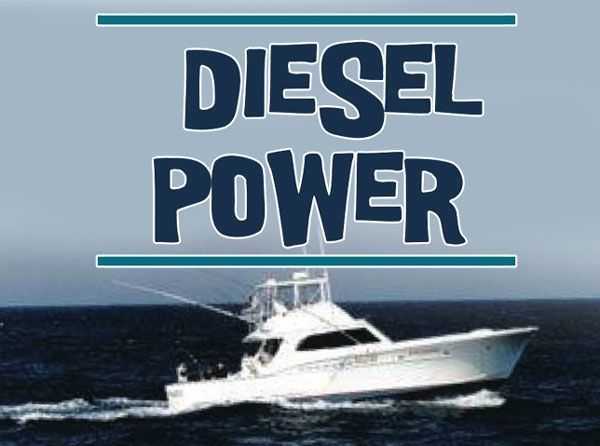Let’s talk about motors. The fact being that I have very little experience with gas motors, I will only be discussing diesel motors. I am not going to try and fool everyone and tell you how to rebuild them; I am just going to give you their evolution from when I started fishing 37 years ago.
When I began my fishing career in 1972 almost all of the boats were being powered by diesel motors. They were only a couple of the vessels fishing out of Oregon Inlet Fishing Center that still had gas propulsion. Diesels just made more sense; cheaper to operate (diesel fuel was a lot cheaper than gas at that time) less maintenance, and they had longer life between rebuilds Their were several manufactures of the engines at this time, including Detroit Marine, Cummins Marine, Caterpillar Marine, Mann, and it seems I can remember one boat had a Kanocki Marine engine. It was the only one by this manufacturer I ever heard being used in the fleet. Through the years each of these manufactures has had its’ turn in the limelight.
The first two manufacturers to battle it out in popularity were Detroit and Cummins. Detroit at the time had its’ popular and dependable 6-71 straight six cylinder motor. The 71 series motor was first developed in 1938 and carried the weight for the company for years, whether it was in a boat, bus, truck, or a tractor. This was Detroit’s “do it all” motor. It was simple to maintain and had a reputation for great fuel economy. The motor could be easily installed as a single screw for a charter fisherman or twin screw for the private boaters. The charter guys were looking for the cheapest way to operate whereas the private sector was looking for speed. The 6-71 certainly delivered.
Cummins countered the Detroit with the 555, or the triple nickel as it was known to the captains. This motor was very dependable and economical also. Its weight to power was excellent. The motor may not have been the workhorse as the 671 was, but still, in its day a very good choice to have in your boat.
In the late 70s boats were growing in length and width and owners were asking for more power. They wanted less running time to the fishing grounds. Detroit, seeing this need introduced the 8-71 series, the first of the V-eight cylinders motors. These motors had seen use in the trucking industry since the 1957 and had been very successful. They marinezed the motors and it became a hit. This was great power for these V- eight engines. Cummins, not to be out done came out with their version which was to be the 903 model. Unfortunately the motor never seemed to reach the popularity of the Detroits.
It was at this time that Cummins appeared to have made the decision not to pursue the growing sport fishing end of the business and they fell out of favor. Detroit was at the top of their game and the leader in this application of their motors. They proceeded to come into the market with turbo engines. This gave the motors more horse power and better fuel economy by forcing more air into the motor. They also came out with the 6-92 and the 8-92 motors. They could be purchased either turbo or natural. They had a good run on the market and a few are still seen in boats today.
At about the same time Detroit developed a new motor that became as much of a success as the 6-71model. This engine was the 12-71 V 12. With a turbo, it was one of the first to
develop 1000 hp! This motor was a beast. I had one in two of the charter boats I have owned and they gave me great speed and performance. Sometimes I still wish I had
one in my boat today.
Detroit later came out with 12-92 and a 16-92 turbo powered motor with even more horsepower but the weight and cost made them less popular among the charter fleet.
Detroit still held on as a leader in the sport fishing industry until the mid 90s. This is the period when Caterpillar stepped into the market with their marine motors. Caterpillar had always built great motors but just not enough horse power to weight ratio for a big sport fishing vessel. They changed the idea when they came out with their 12 cylinder 4 stroke diesel. The first ones were 1000 horse power but weighed considerably less than the 12 cylinder Detroits. Once Caterpillar came out with the computer models of their motors, developing over 2000 horsepower there has been no looking back for the company. The 32 of the 35 offshore charter boats at Oregon Inlet Fishing Center all run Caterpillars engines and the remaining 3 have Detroits!
Looking to the future Detroit has developed a common rail motor that is approaching 3000 horse power. Amazing! Thinking back just 40 years ago, having started my career on a boat with just 400 horsepower. Where will it all end? Maybe Jet propulsion in a charter boat will become a reality someday. Wouldn’t that be amazing!
[easy-social-share]
